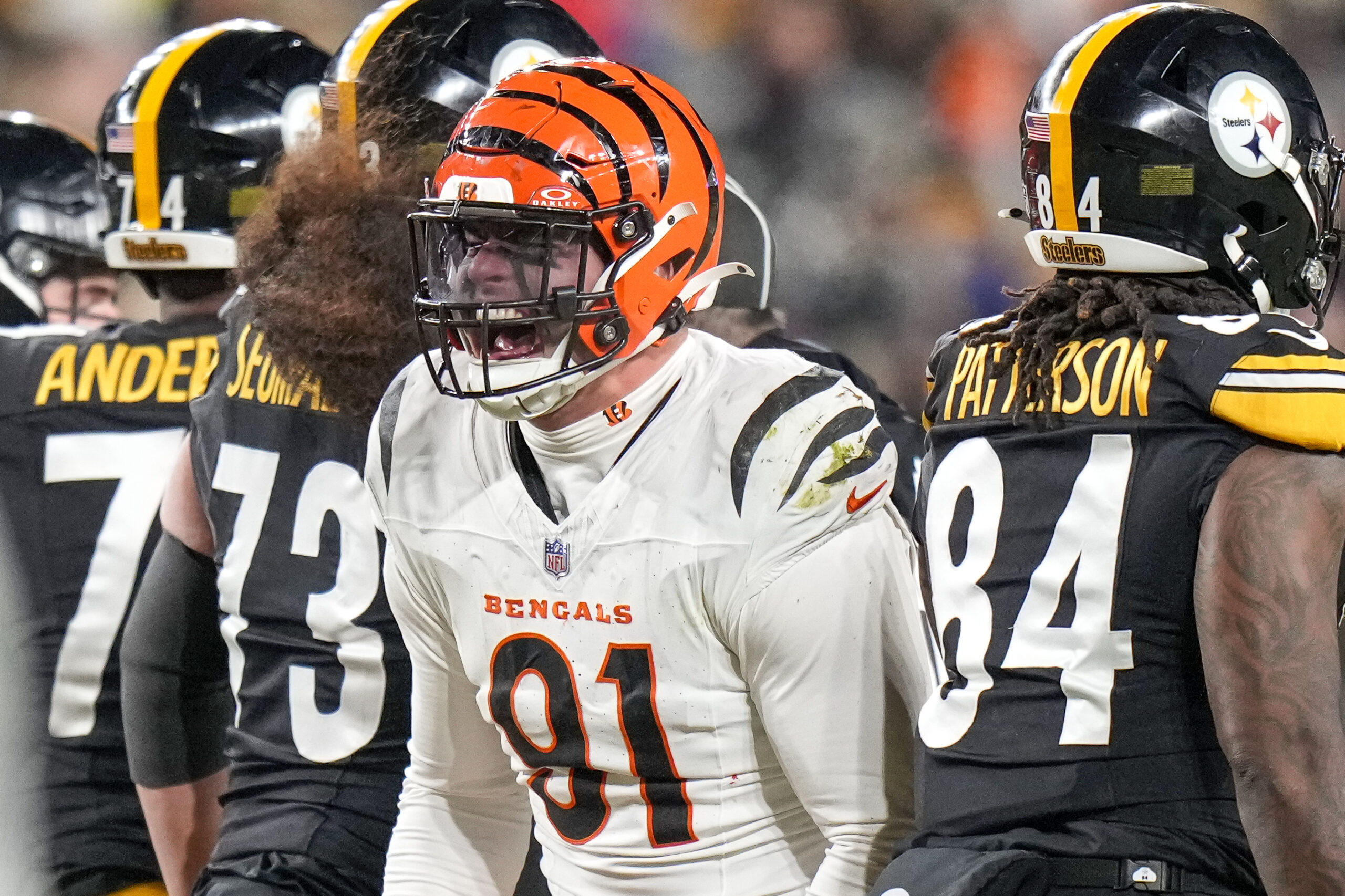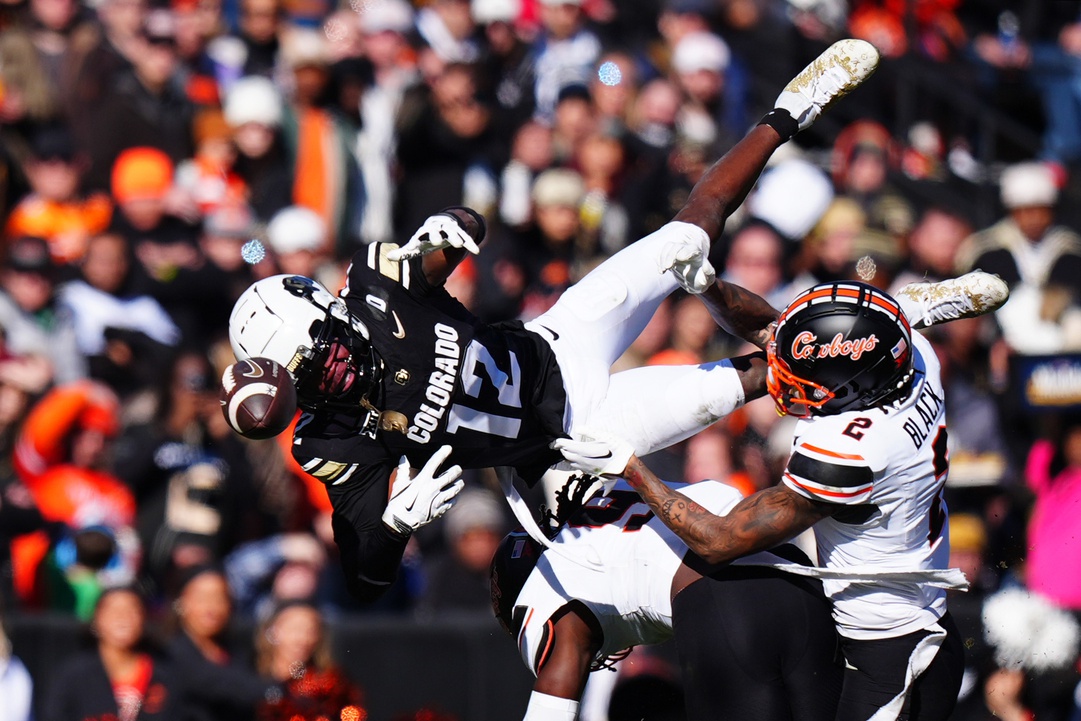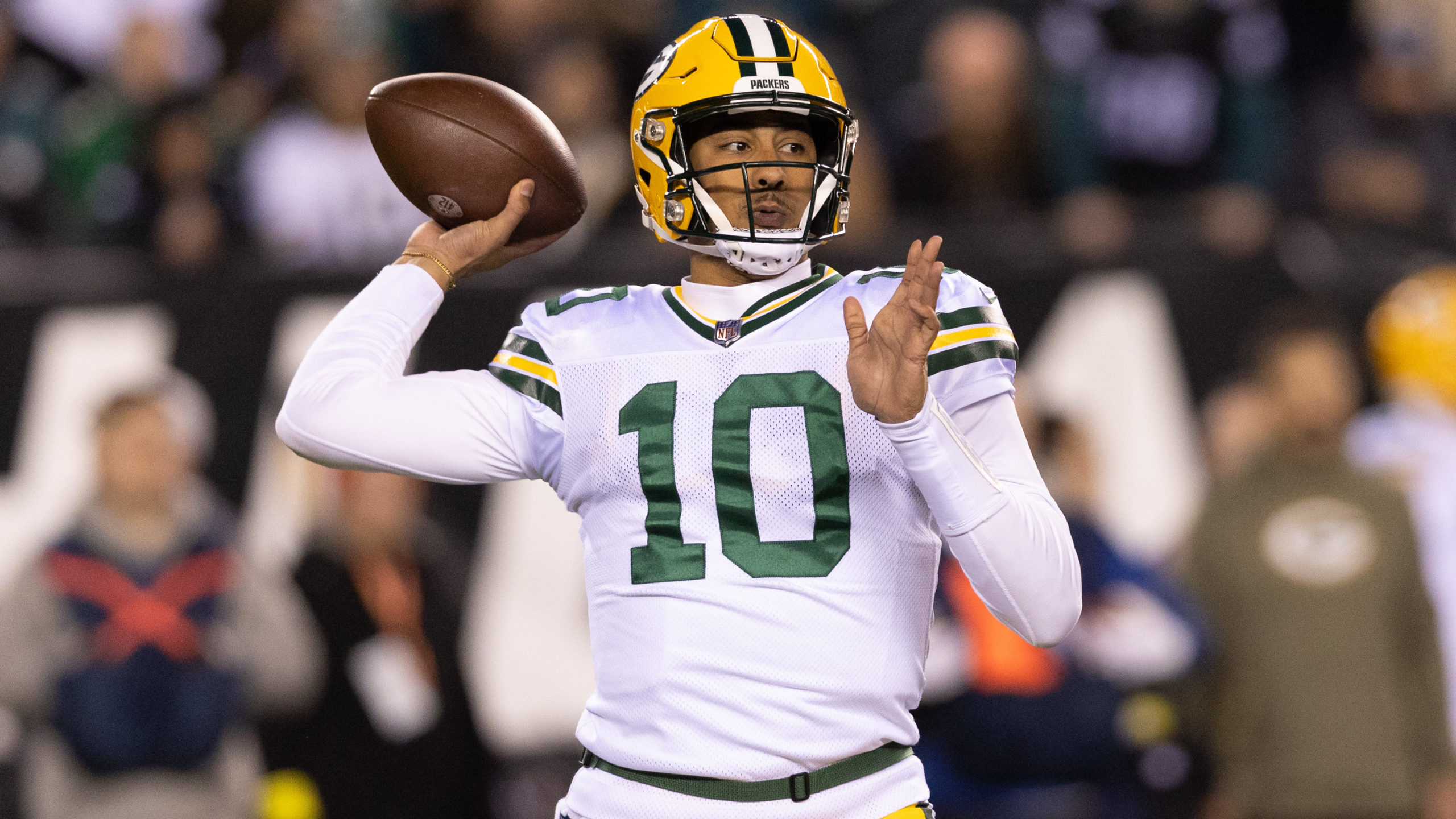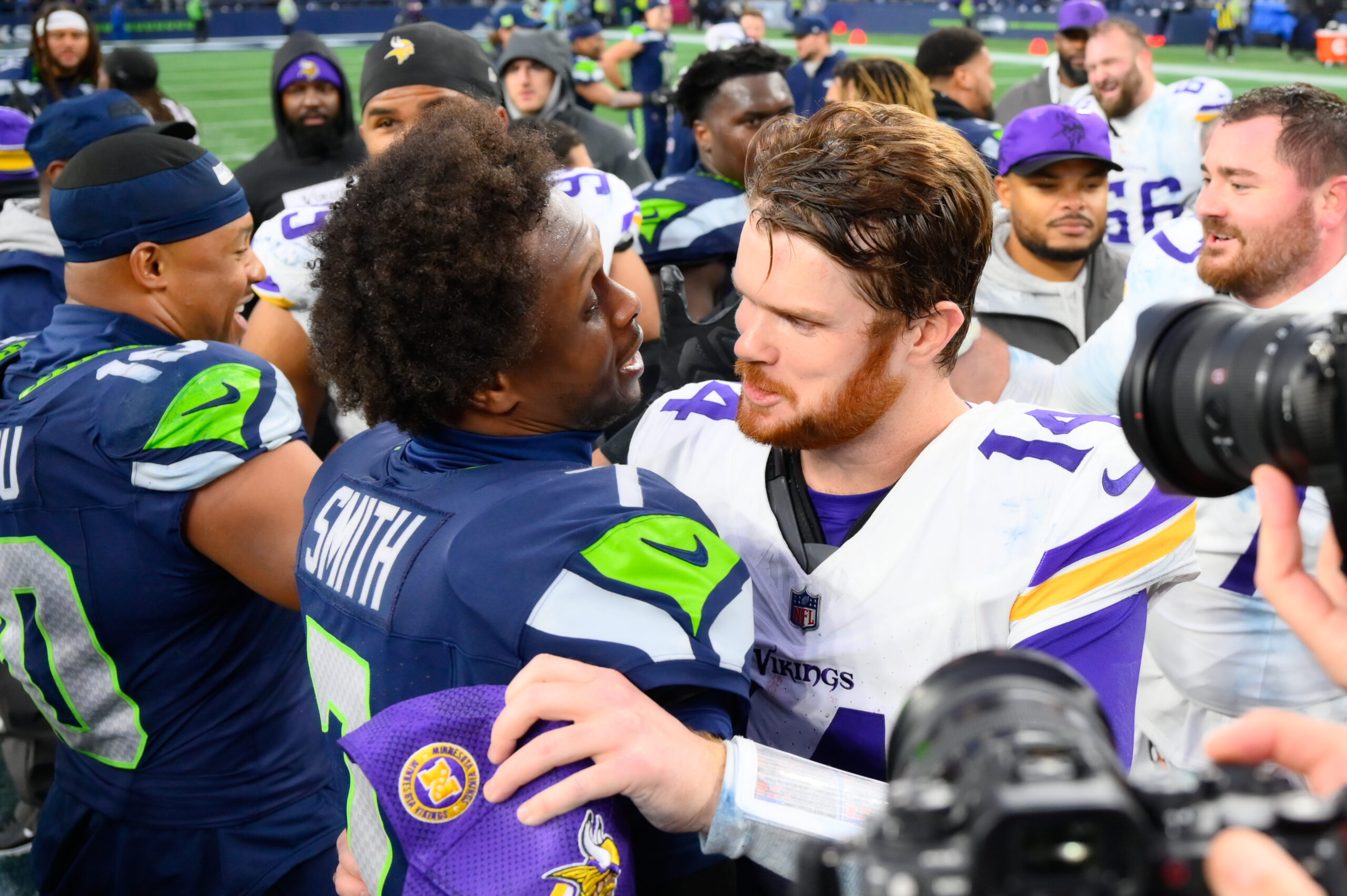NFL Analysis
4/16/24
7 min read
2024 NFL Draft: Defending Most Controversial Player Rankings
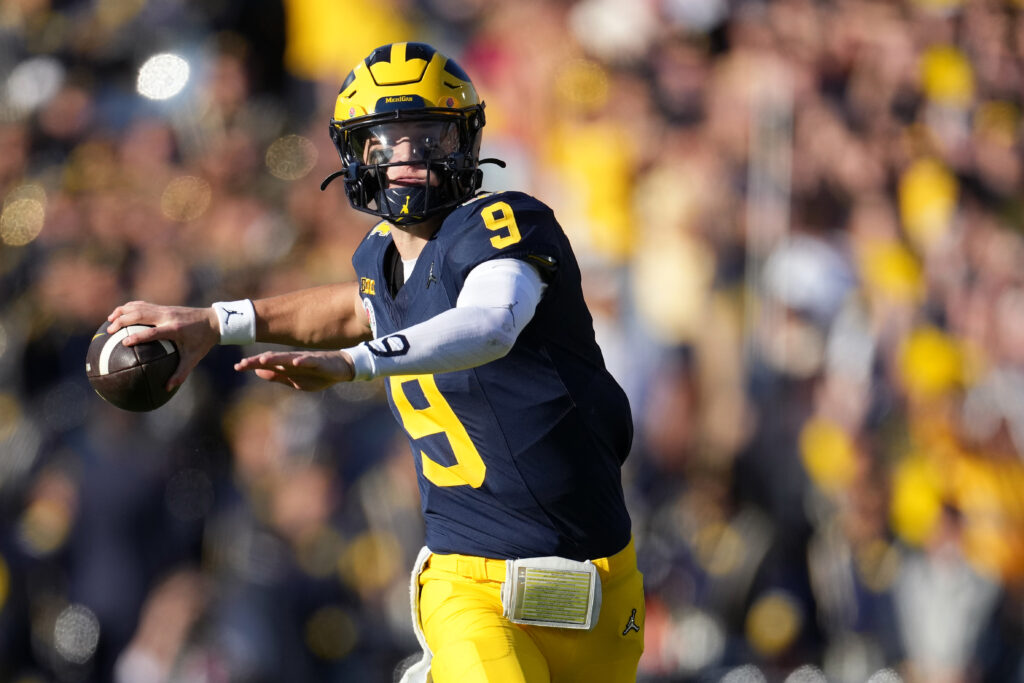
Every year, players are graded higher and lower than the consensus from specific outlets. That won't change for the 2024 NFL Draft, either. At Sports Info Solutions, this typically happens more than at most, considering we grade based on NFL role by Year 2 rather than draft round.
While it comes with the territory, we do want to point out a few players we are higher and lower on than most and give our reasoning as to why.
All positional stat ranks are based on players featured on the 2024 NFL Draft Big Board.
Players Who Are Ranked Higher or Lower
Higher: DT Mekhi Wingo, LSU 
SIS Rank: 39
Mock Draft Database Consensus: 116
Undersize at just taller than 6 feet, Mekhi Wingo makes up for his short stature with explosiveness off the ball. His 2023 pressure share (15 percent) ranks fifth among featured defensive tackles, and his 0.8 tackle for loss per game ranks sixth. He spent a fair amount of time lining up over tackles in LSU’s defense but should be put into a better situation to produce in the NFL as a 3-tech in an even front.
Here's what SIS scout Chad Tedder wrote about Wingo's pass rush: “With this quickness, he also possesses the strength to keep pushing linemen back into the pocket and provide interior pressure on the quarterback.” And against the run, “He can anticipate the snap and be quick out of his stance to reset the line of scrimmage a yard or two back.”
Lower: QB J.J. McCarthy, Michigan 
SIS Rank: 79
Mock Draft Database Consensus: 6
There’s been a ton of buzz since the end of the college season on J.J. McCarthy, and rightfully so. He helped Michigan win a national championship, crushed his pro day and has done nothing but cement himself as a top pick come draft night. However, we are slightly lower on his potential early in his career.
As mentioned before, we grade based on role by Year 2. McCarthy does many good things, including showing athleticism to extend plays and displaying leadership on and off the field. Though, considering how little he had to produce in high-leverage situations compared with most other draft-eligible quarterbacks, there are questions surrounding that ability early in his career.
SIS scout Jordan Edwards feels McCarthy is more of a limited, circumstantial starter early on and thinks of him as more of a Desmond Ridder–type prospect with the ability to grow into a strong starter in two to three years. Edwards writes: “He won’t be the most talented quarterback at the next level, but if he can improve his decision-making and ability to play with anticipation, he can raise his floor.”
>> READ: Film Doesn't Lie About McCarthy's Draft Stock

Higher: OG Jalen Sundell, North Dakota State 
SIS Rank: 74
Mock Draft Database Consensus: 316
Arguably, the biggest difference between us and consensus is Jalen Sundell. A combine invite and someone who popped up somewhat late in the process, Sundell put together a great pro day that culminated in a 9.35 Relative Athletic Score, with a notable 30.5-inch vertical and 1.77-second 10-yard split.
He needs to get stronger, but Sundell pairs high-end athleticism with versatility. He has starting experience at left tackle and center. However, he’ll struggle some with big noses at center and elite rushers on the edge, making a fit at guard warranted.
Our scouts highlight his strengths as winning angles in the run game, agility at the second level and his finishing through the whistle.
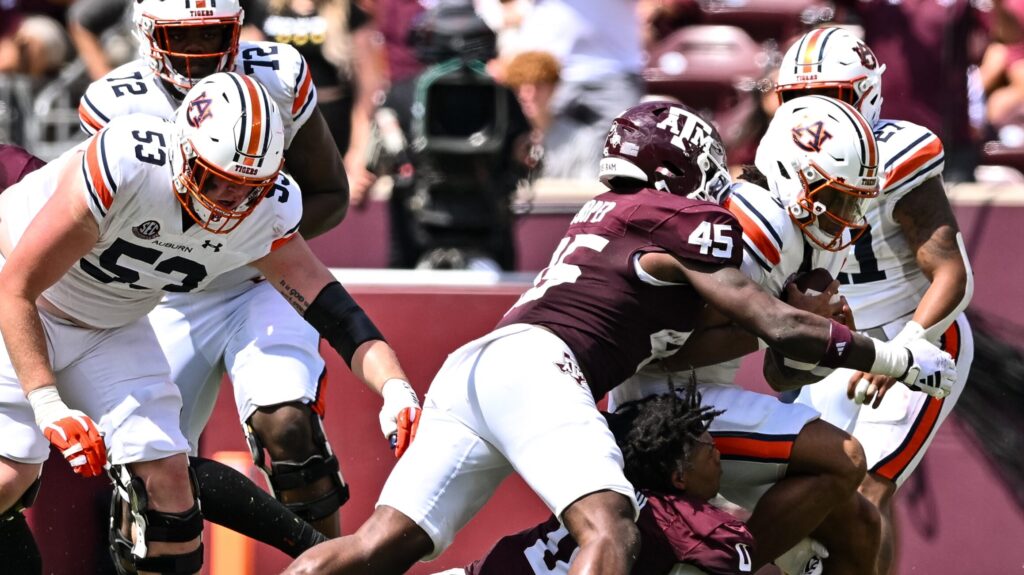
Lower: LB Edgerrin Cooper, Texas A&M 
SIS Rank: 161
Mock Draft Database Consensus: 42
Many analysts see Edgerrin Cooper as the top linebacker in this class. We’ve taken a bunch of looks at him, and while we think he shows a lot of potential, we don’t feel he’s a starting-caliber player by Year 2. He’s an incredible athlete who can make a difference as a blitzer and on special teams, but he needs to get stronger and improve his instincts in coverage.
Our scouts write, “Against the pass, he struggles to drop to his zone efficiently, and his lack of hip flexibility hinders his appeal to mirror breaks. In the run game, he attacks downhill aggressively, making numerous plays at or behind the LOS but can be overaggressive and susceptible to misdirection. He has mediocre stoutness and lower-body strength to take on blocks at the POA.”
It wouldn’t shock us if he’s starting somewhere by his second season. We think he has tons of potential and has a role on a team early in his career, but it’ll take a few years until he’s a true, quality, starting-level player.
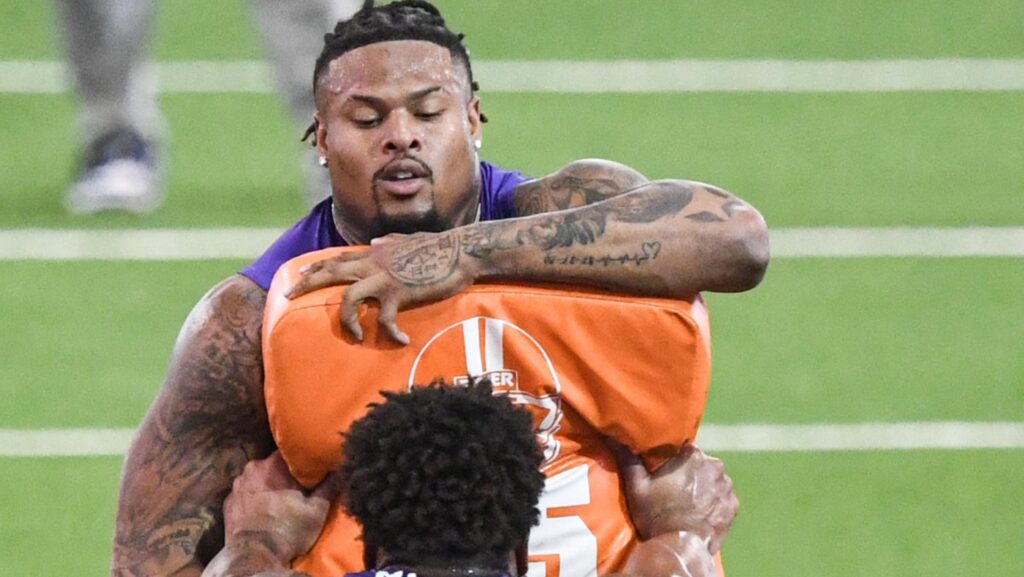
Higher: EDGE Xavier Thomas, Clemson 
SIS Rank: 75
Mock Draft Database Consensus: 197
A former top recruit coming out of high school, Xavier Thomas never produced the way a high-level edge recruit is expected to in college. While he had some injury issues throughout his career, he never had more than 3.5 sacks in a season. However, he generated a fair amount of pressure.
His first-step explosion, bend on speed rushes, hot motor and pursuit speed are all major strengths. In watching, he reminded us a lot of Byron Young coming out of Tennessee last year, who we graded out as a 6.6 (low-end starter). He registered eight sacks as a rookie for the Rams at nearly the same size as Thomas.
The Clemson product oozes potential, and if he puts it all together, he should be a productive designated pass rusher early and often.
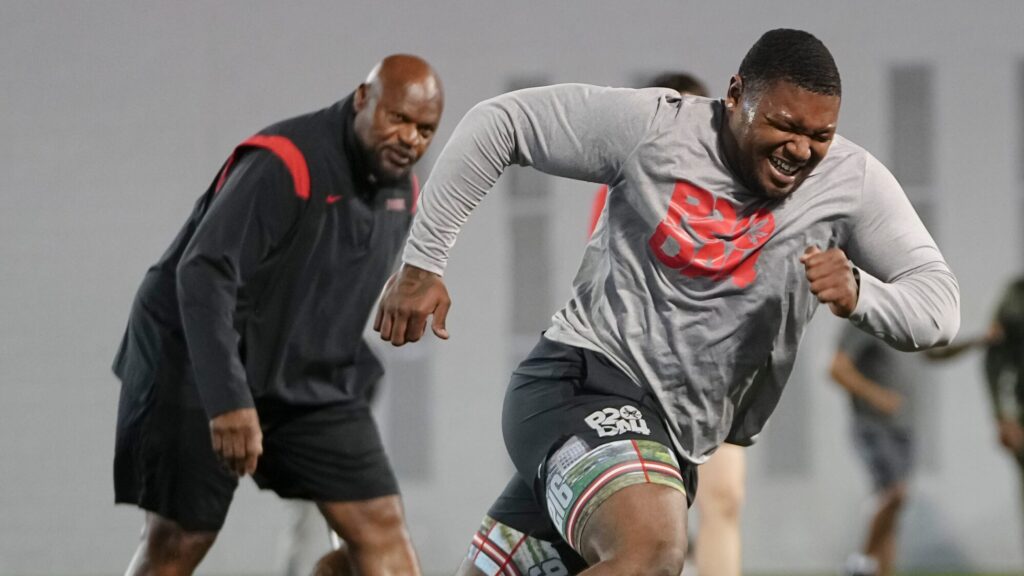
Lower: DT Michael Hall Jr., Ohio State 
SIS Rank: 162
Mock Draft Database Consensus: 69
We’re a little lower on a few defensive tackles this year, but one that stands out is Michael Hall Jr. Hall, who is a strong interior presence and wins quickly, as evidenced by his seven percent quick-pressure rate that leads all featured defensive tackles.
He's lower on our board because of his struggles to anchor in the run game and his inconsistent motor.
Our scouts write, “He knows when to turn his motor up in pass-rush situations, but his stamina and motor are inconsistent as a whole. As a run defender, he consistently lacks some lower-body strength to anchor at the POA. Although he does show some pop in his hands when striking on contact, he gets easily displaced at the LOS with poor pad level.”
While we are higher or lower on some players, that won’t affect their draft positioning come draft night. Many players under or overperform based on their draft position every year.
This is why we don’t grade based on draft rounds; they’re not easily comparable year to year. Grading based on a player's defined role at the next level makes it much easier to see where a player can or can’t make an impact, which is why we and many teams use this method of grading.
Stats and ranks as of 4/12/2024
This article was written by Nathan Cooper.


